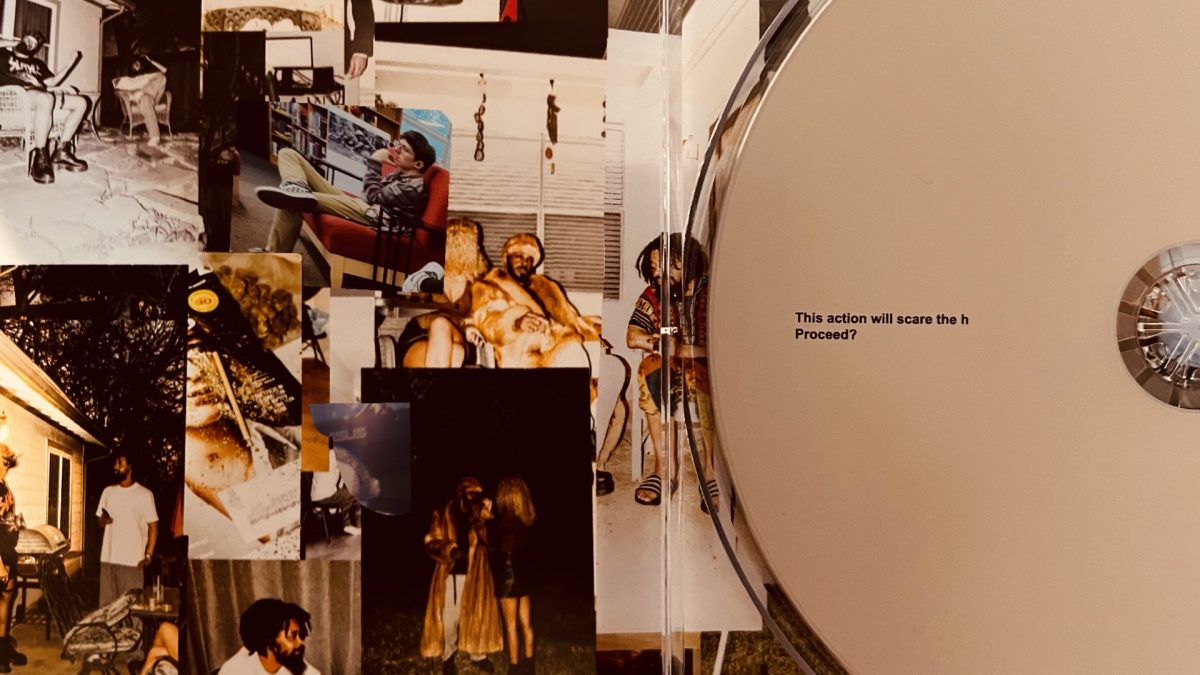The thirty-five-minute song you’ve never heard of.
In the late 1980s, during the city pop genre explosion in Japan, three aspiring musicians in Tokyo decided to create a band to make and perform music together. Throughout the 90s they began releasing albums and found a small group of fans to play music to. As each album came out, more and more fans were introduced to the psychedelic and unique sounds of the band, a nice change of pace in the primarily city pop, and the “vaporwave-like” music environment of Japan at the time. The band started selling out shows in the hundreds. Even with their alternative sounds, they were still starting to get plays on the radio, and everything seemed to go uphill from there.
This is the beginning of the band “Fishmans” story. The band consists of drummer Kin-ichi Motegi, bassist Yuzuru Kashiwabara, keyboard player Hakase-Sun, guitar player Kensuke Ojima, and lead singer Shinji Sato. In their decade-long run, they have created a cult following from many music critics and were starting to build an audience for themselves and their music. Perhaps the album that turned the most heads in Japan was their extravagant album “LONG SEASON” in 1996.
Looking at the surface of the album, it is already apparent that this is not going to be the traditional album listening experience. The “album” contains a singular track. The title track takes up the entire thirty-five-minute run track of the album. Somewhat short for an album but quite lengthy if it can be considered a song. Despite the 1 song tracklist, many listeners and the band themselves divide the song into 5 distinct sections. The instrumentals morph and evolve throughout the album, and change stages after each section introducing new lyrics, instruments, and sounds to keep the album inventive and creative while also connecting each section into one complete megasong with its clean and flawless transitions between sections.
The album begins with dreamy synths and a curious bass. The combination of all the instrumentals at the beginning of the album immediately calms every nerve in my body, and relaxes the mind, as if I’m being entranced by a magician. The power of just the beginning of the song gets even more dominant 2:28 minutes into the album. A new instrument, a piano is introduced, and the mesmerizing arpeggios loop throughout the next couple of minutes with samples of ambient drones and bouncy bass swirling around me filling me with nothing but bliss, making me forget anything stress or worry I was having in the day.
The brilliance of “Fishmans” production on this album is first apparent to me when I hear its layering in instrumentals and vocals. As I said earlier, the album stays fresh through its entire runtime because it evolves as the album progresses. The eclectic set of instruments used in this album from simple vocals, drums, and pianos to more left-field instruments like an accordion, a kalimba, and beautiful chimes don’t just wait for their turn. The instruments are slowly introduced in the album, and each time a new instrument is introduced, it’s layered on top of the last, so part of the song you enjoy will get elevated even more by another instrument that gets added later, illustrating creative control and talent in the instruments of the album. The slow introduction of layering makes the entire album connect to form one art piece, while also creating distinguishable parts and sections of the song.
The second section of the song builds on top of the first section. Lyrics are sparse on the album, but the second section demonstrates Sato’s special and beautiful talent in his control of voice. While the first section had the lead singer’s voice come into frame, the second section demonstrates how Sato can use his voice to create something special. His high-pitched voice brings out some of the most raw, sincere, and beautiful vocal lines out of any album I’ve heard. His humming, singing, and even screeching around the middle point of the album reflect the same emotions as the sorrowful, yet happy piano notes in the middle of the album. Sato’s voice makes LONG SEASON feel passionate and real, helping me resonate with the album.
The third section turns away from instruments and dives deep into experimental territory. Samples and sound effects take the star of the show. Hints throughout the beginning of the album point you toward a cave-like atmosphere with the dreamy pianos and reverb on the synths. The third section goes a long way with this idea with its stripped-back instrumentals and heavy reliance on things like water droplet samples, chimes, and laser sound effects. This section of the album resembles more of an ASMR audio than an actual song, but still somehow drives the album forward. The past-mentioned water droplet samples and chimes feel so satisfying to listen to. They feel enchanted and enhance the cave aspect of the album so much.
This section of the album quickly distorts into a powerful drum break that words can’t do justice. The spotlight goes away from the samples and straight into drums that sound like no other. Drums were already seen throughout almost the entire album, but this part of the third section is dedicated to how talented and creative the bongo and echo-like drums this album can create.
The fourth section of the album has optimistic guitar chords filled with so much bliss and happiness that falls onto the listener. The wordless vocals of the lead singer as he hums and whistles throughout this section say enough about the tone of the section and overall album. Sour violins near the end of the section can be hard to listen to for some, but to me, it brings the album character and enforces its atmospheric sound.
The entrancing piano arpeggio loops from the first section slowly fading back into the album in the last section create a beautiful display of the album coming around “full circle.” The last section wraps up the unique album in such a perfect manner and introduces new ideas in electric guitar solos and catchy drums that build a small climax to a humble album. Instruments like the accordion and unique joyful vocals come back from the beginning of the song, making the last part of the album feel like the end of a play, where all the instruments come back out and do one final bow before ending the show, making the album feel complete.
The Japanese lyrics of the whole album form a theme of hope and joy. The story of this album illustrates two people finding joy in running around a field during a beautiful sunset, spreading joy to one another amongst the Tokyo streets until they stay close together as autumn approaches and endure the “long season.” The days, weeks, and seasons can get stressful and worrying, and that’s okay. Taking joy in the long season with others rather than stressing about it lets our minds embrace the beauty of life as a whole.
After the album’s release in 1996, the band was projected to reach well-deserved stardom with their creativity and talent. They would reach even more popularity with their live album in 1999, which many consider to be the best live album of all time. But unfortunately, two months after that live album was released the lead singer, Sato, suddenly died of heart failure. The circumstances of his death are mysterious, and many are still arguing and theorizing about his death to this day. The band disbanded quickly after Sato died in 1999, and “LONG SEASON” would be one of the last albums the band would make.
“LONG SEASON” is an album that will hold special places in my and many other’s hearts, and while it’s devastating to hear that the “Fishmans” story is over, Sato will always live on through albums like “LONG SEASON” and its growing legacy, and listeners throughout the world will forever take Sato’s word, and instead of focusing on shortcomings and unfortunate circumstances in life like death, will look forward in life, embracing its beauty, and living happily through their own long season.






Etinosa • Nov 14, 2023 at 9:57 pm
My favorite song of all time